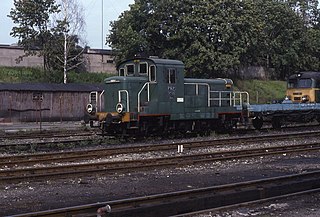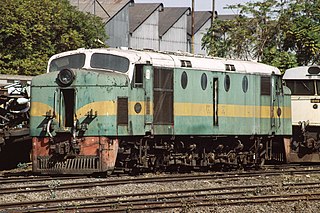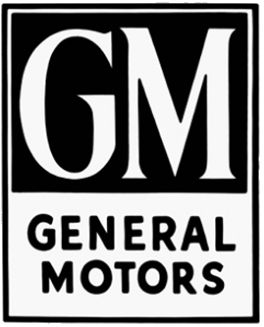This article needs additional citations for verification .(July 2013) |
| Class D.345 | |||||||||||||||||||||
|---|---|---|---|---|---|---|---|---|---|---|---|---|---|---|---|---|---|---|---|---|---|
 D.345 locomotive in the original livery. | |||||||||||||||||||||
| |||||||||||||||||||||
| |||||||||||||||||||||
| |||||||||||||||||||||
| |||||||||||||||||||||
The FS Class D.345 is a class of diesel-electric locomotive used in Italy, introduced in the 1970s and still in service.
This article needs additional citations for verification .(July 2013) |
| Class D.345 | |||||||||||||||||||||
|---|---|---|---|---|---|---|---|---|---|---|---|---|---|---|---|---|---|---|---|---|---|
 D.345 locomotive in the original livery. | |||||||||||||||||||||
| |||||||||||||||||||||
| |||||||||||||||||||||
| |||||||||||||||||||||
| |||||||||||||||||||||
The FS Class D.345 is a class of diesel-electric locomotive used in Italy, introduced in the 1970s and still in service.
After the positive experience with class D.343, in 1970, Italian state railways, Ferrovie dello Stato, ordered further 70 diesel locomotives with some minor improvements. The FIAT engine was confirmed, while the Breda-engine was to be abandoned and a new, more reliable cooling system was fitted. The locomotives were manufactured by FIAT, Breda and SOFER, with electrical equipment provided by Magneti Marelli, TIBB and Italtrafo. The last unit was delivered in 1979.
The D.345's structure is very similar to that of D.343. The central compartment, housing the engine, the generator and the cooling system, is missing the baggage room, which had been never used in the previous class. The engine is a 4+4 V cylinder FIAT 218SSF with direct fuel injection, with a power output of 1,350 HP at 1500 rpm.
The electric generator is a DC one produced by Tecnomasio Italiano Brown Boveri (TIBB), with a power of 750 kW (1,010 hp). The electric motors, one for each bogie, were produced by Ansaldo.
The command circuit includes electro-pneumatic switches and relays, located in a large cabin in the front cab. D345 also introduced a static regulation with field-weakening (shunting) of the traction motors, which is divided in five levels that are automatically inserted (one at a time on each motor) when the throttle controller (which looks like a steering wheel and has 13 positions) is in any notch between 10 and 13.

A locomotive or engine is a rail transport vehicle that provides the motive power for a train. If a locomotive is capable of carrying a payload, it is usually rather referred to as a multiple unit, motor coach, railcar or power car; the use of these self-propelled vehicles is increasingly common for passenger trains, but rare for freight.
IVECO, an acronym for Industrial Vehicles Corporation, is an Italian multinational transport vehicle manufacturing company. It designs and builds light, medium, and heavy commercial vehicles. The name IVECO first appeared in 1975 after a merger of Italian, French, and German brands. Its production plants are in Europe, China, Russia, Australia and Latin America and it has about 5,000 sales and service outlets in over 160 countries. The worldwide output of the company amounts to around 150,000 commercial vehicles with a turnover of about €10 billion.

A diesel locomotive is a type of railway locomotive in which the prime mover is a diesel engine. Several types of diesel locomotives have been developed, differing mainly in the means by which mechanical power is conveyed to the driving wheels.

The Ganz Works or Ganz was a group of companies operating between 1845 and 1949 in Budapest, Hungary. It was named after Ábrahám Ganz, the founder and the manager of the company. It is probably best known for the manufacture of tramcars, but was also a pioneer in the application of three-phase alternating current to electric railways. Ganz also made ships, bridge steel structures and high-voltage equipment. In the early 20th century the company experienced its heyday, it became the third largest industrial enterprise in Kingdom of Hungary after the Manfréd Weiss Steel and Metal Works and the MÁVAG company. Since 1989, various parts of Ganz have been taken over by other companies.

The British Railways Class D3/7 is a class of 0-6-0 diesel electric shunting locomotives built as LMS Nos. 7080–7119. The class were built from May 1939 through to July 1942 by the London, Midland and Scottish Railway at their Derby Works using a diesel electric transmission supplied by English Electric.

LMS No. 10000 and 10001 were the first mainline diesel locomotives built in Great Britain. They were built in association with English Electric by the London, Midland and Scottish Railway at its Derby Works, using an English Electric 1,600 hp diesel engine, generator and electrics.

SM30 is a Polish series of diesel shunting locomotives used by PKP and industry, built by Fablok, Chrzanów. They were also used for a local traffic.
British Rail Class D3/11 was a locomotive commissioned by the Great Western Railway, but delivered to its successor British Rail in England. It was a diesel powered locomotive in the pre-TOPS period.

Rhodesia Railways class DE2 are a type of diesel locomotive built for operations on Rhodesia Railways in the 1950s. The first entered service on 22 June 1955.

The FS Class D.341 is a class of diesel-electric locomotive used in Italy, introduced in the 1950s and still in service. Most of the remaining units are in service with La Ferroviaria Italiana (LFI).

The FS Class D.443 is a class of diesel-electric locomotive used in Italy, introduced in the late 1960s and still in service.

The Renfe Series 333 are high power six-axle diesel-electric locomotives built in the 1970s; at the time of their introduction they were the most powerful non-electric locomotives in Spain.

The Baldwin RS-4-TC is a diesel-electric locomotive (switcher) built by the Baldwin-Lima-Hamilton Corporation between July 1953 and January 1955. The RS-4-TCs were powered by a supercharged twelve-cylinder diesel engine rated at 400 horsepower (298 kW), and rode on a pair of two-axle trucks in a B-B wheel arrangement. 74 of these models were built mainly for the Army while a few of them went to the Air Force.

The Class D.445 is a class of diesel locomotives used by the Italian Ferrovie dello Stato (FS) railway company and by Trenord. 150 units were built between 1974 and 1988, divided into three series.
Tecnomasio was an Italian scientific and precision instrument company founded in the 1860s. By the beginning of the 20th century the company has begun to produce electrical equipment. After financial problems in the early 1900s the company was acquired by Brown Boveri becoming Tecnomasio Italiano Brown Boveri commonly known as TIBB; instrument production halted and the company became an industrial electrical equipment producer, one of the major companies in Italy.

The South African Railways Class DS of 1939 was a diesel-electric locomotive.

SNCF CC 70000 was a class of two prototype high power diesel-electric locomotives numbered CC 70001 and 70002. They were built at the same time as a diesel-hydraulic version, BB 69000.

The Cleveland Diesel Engine Division of General Motors (GM) was a leading research, design and production facility of diesel engines from the 1930s to the 1960s that was based in Cleveland, Ohio. The Cleveland Diesel Engine Division designed several 2 stroke diesel engines for submarines, tugboats, destroyer escorts, Patapsco-class gasoline tankers and other marine applications. Emergency generator sets were also built around the Cleveland Diesel and were installed in many US warships. The division was created in 1938 from the GM-owned Winton Engine Corporation and was folded into the GM Electro-Motive Division in 1962. The engines continue in use today on older tugs.

Rigid-framed electric locomotives were some of the first generations of electric locomotive design. When these began the traction motors of these early locomotives, particularly with AC motors, were too large and heavy to be mounted directly to the axles and so were carried on the frame. One of the initial simplest wheel arrangements for a mainline electric locomotive, from around 1900, was the 1′C1′ arrangement, in UIC classification.

An internal combustion locomotive is a type of railway locomotive that produces its pulling power using an internal combustion engine. These locomotives are fuelled by burning fossil fuels, most commonly oil or gasoline, to produce rotational power which is transmitted to the locomotive's driving wheels by various direct or indirect transmission mechanisms. The fuel is carried on the locomotive.